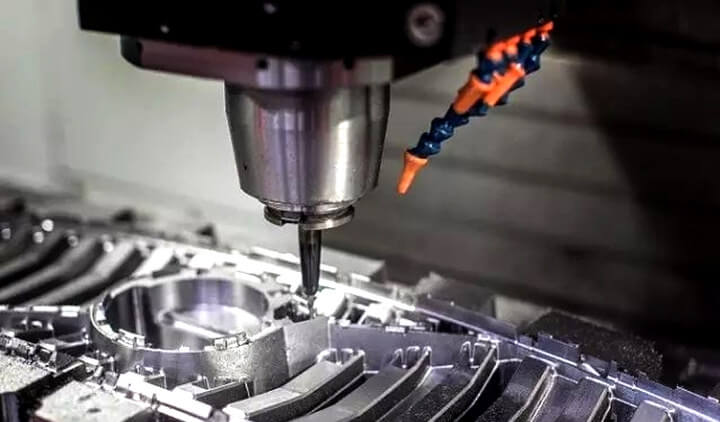(1) Single Parting Surface Injection Mold
When the mold opens, the moving and fixed molds separate to release the molded part. This type of mold is known as a single parting surface mold, or a two-plate mold. It is the simplest and most basic form of injection mould and can be designed as either a single-cavity or multi-cavity mold. It is the most widely used type of injection mold.
(2) Double Parting Surface Injection Mould
A double parting surface injection mold has two parting surfaces. Compared to the single parting surface mold, the double parting surface mold adds a locally movable intermediate plate (also called a movable gate plate) in the fixed mold section. This plate contains gates, runners, and other necessary parts and components. Therefore, it is also called a three-plate mold (moving plate, intermediate plate, fixed plate). It is commonly used for single-cavity or multi-cavity molds with point gates.
When the mold opens, the intermediate plate separates from the fixed plate at a set distance along the guide pillars of the fixed mold, allowing the runner system’s solidified material to be removed between the two plates. Double parting surface molds are complex in structure, expensive to manufacture, and difficult to process parts, so they are generally not used for large or very large plastic parts.
(3) Injection Mould with Lateral Parting and Core-pulling Mechanisms
When a plastic part has side holes or undercuts, a core or slider that can move laterally must be used for molding. After injection molding, the moving mold first moves down a certain distance, and then the inclined surface of the bent pin fixed on the fixed template forces the slider to move outward. Meanwhile, the ejector mechanism’s push rod pushes the ejector plate to remove the molded part from the core.
(4) Injection Mould with Movable Forming Parts
Due to certain special structures of plastic parts, the injection mold must be equipped with movable forming parts such as movable cores, movable cavities, movable inserts, and movable threaded cores or rings. These parts can move out of the mold with the molded part during demolding and then be separated from the part.
(5) Automatic Unscrewing Injection Mold
For plastic parts with threads that require automatic demolding, a rotating threaded core or ring can be installed on the mold. By using the mold opening action, the injection molding machine’s rotating mechanism, or a dedicated transmission device, the threaded core or ring is rotated to release the part.
(6) Runner-less Injection Mold
A runner-less injection mold uses thermal insulation heating methods to keep the plastic between the injection molding machine nozzle and the mold cavity in a molten state, thus leaving no runner system solidified material when the mold is opened to remove the part. There are two types: insulated runner molds and hot runner molds.
(7) Right-angle Injection Mold
Right-angle injection moulds are only suitable for angle injection molding machines. Unlike other injection molds, the feeding direction in these molds is perpendicular to the opening and closing direction of the mold. The main runner is set on both sides of the moving and fixed mold parting surfaces, and its cross-sectional area usually remains constant. To prevent wear and deformation at the end of the main runner from the injection molding machine’s nozzle, a replaceable runner insert can be set.
(8) Injection Mould with Ejector Mechanism on the Fixed Mold
In most injection moulds, the ejector device is installed on the moving mold side, facilitating the ejection mechanism’s operation in the injection molding machine’s mold opening and closing system. However, in actual production, due to the shape of some plastic parts, it is more advantageous to keep the part on the fixed mold side. To remove the part from the mold, an ejector mechanism must be set on the fixed mold side.
If you looking for a professional plastic injection mold factory, Grandshine is your best choice.



Related Posts
Quality Assurance & Quality Control | Definition-Difference-Methods-Process
what is the injection molding-part1
Some tips help you understand electric injection molding machines